Trivia Browser
Company: Atari
▲
2
▼
Founders Nolan Bushnell and Ted Dabney originally wanted to name Atari "Syzygy," only to learn that the name was already taken by a roofing company. Consequently, the pair decided to brainstorm new ideas while playing a round of Go, which Bushnell was experienced in; an issue of Atari's home computer magazine I/O stated that "Their best brainstorming always occurred over a good game and a bottle of beer."
Following this, Bushnell and Dabney decided to name the company after a piece of Go jargon, settling on "Atari," a term used to describe a playing piece that is surrounded on all but one side. "Sente" and "Hane" were also considered as possible names.
Following this, Bushnell and Dabney decided to name the company after a piece of Go jargon, settling on "Atari," a term used to describe a playing piece that is surrounded on all but one side. "Sente" and "Hane" were also considered as possible names.
Page about Atari's relation to Go:
https://web.archive.org/web/20220128094617/https://senseis.xmp.net/?AtariInc
Page detailing the definition of atari in Go:
https://web.archive.org/web/20220128094056/https://senseis.xmp.net/?Atari
https://web.archive.org/web/20220128094617/https://senseis.xmp.net/?AtariInc
Page detailing the definition of atari in Go:
https://web.archive.org/web/20220128094056/https://senseis.xmp.net/?Atari
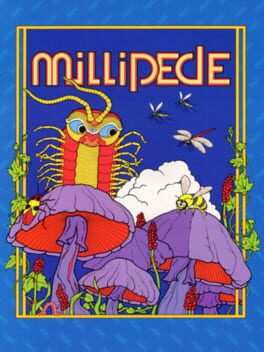
▲
2
▼
 The Nintendo Entertainment System versions of Defender II, Joust, and Millipede were all conceived as part of a failed deal between Nintendo and Atari to distribute the Famicom internationally. Development was outsourced to HAL Laboratory, who decided to publish the games themselves in 1987 after Nintendo took international distribution of the console into their own hands two years prior. One additional title was put together as part of the Atari deal, but it was never released, with none of the parties involved revealing what it was.
The Nintendo Entertainment System versions of Defender II, Joust, and Millipede were all conceived as part of a failed deal between Nintendo and Atari to distribute the Famicom internationally. Development was outsourced to HAL Laboratory, who decided to publish the games themselves in 1987 after Nintendo took international distribution of the console into their own hands two years prior. One additional title was put together as part of the Atari deal, but it was never released, with none of the parties involved revealing what it was.Because of the circumstances behind their conception, the Japanese versions of these three games all feature title screens reminiscent of Famicom launch titles, with the copyright information uniformly reading "COPYRIGHT 1983 ATARI". When Nintendo of America exported the games to North America in 1988, the title screens were made more elaborate and the copyright info was updated. The ways of accessing the game's modes are also changed in the North American release; instead of having them all available on the title screen, the player must press Start in Defender II and Millipede to bring up a menu (itself displaying additional copyright information). In Joust, pressing Start skips the menu and automatically begins Game A; the player must press Select in order to access the menu.
The development of Joust as a launch title for an Atari-distributed system would have a prominent knock-on effect on HAL and Nintendo's future. The game was one of the first titles to be programmed by Satoru Iwata, who would go on to become a vital asset to HAL thanks to his coding skills before becoming Nintendo's president in 2002, and his experiences developing Joust would help him program Balloon Fight.
The Cutting Room Floor articles:
https://tcrf.net/Defender_II_(NES)
https://tcrf.net/Joust_(NES)#Regional_Differences
https://tcrf.net/Millipede_(NES,_HAL_Laboratory)
https://tcrf.net/Defender_II_(NES)
https://tcrf.net/Joust_(NES)#Regional_Differences
https://tcrf.net/Millipede_(NES,_HAL_Laboratory)
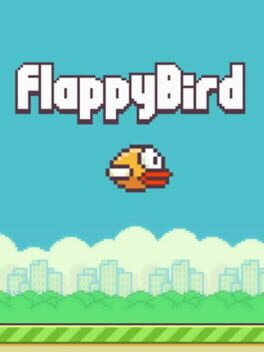
▲
2
▼
Flappy Bird was removed from app stores by creator Dong Nguyen on February 8th 2014, due to being overwhelmed by its success and feeling guilt over the addictive, frustrating nature of the game, which he had originally intended to be relaxing. Although many speculated that the game was taken down by Nintendo due to the game's pipes and their similarity to the pipes from the Mario series, both Nguyen and Nintendo denied this.
Nguyen claimed that his worries about the game had lost him sleep, and removing the game from sale managed to restore piece of mind - despite this, Nguyen did promise a Flappy Bird comeback, albeit in a less addictive form, which would eventually come in the form of an official sequel: Flappy Birds Family for Amazon Fire TV.
Some eBay users attempted to sell the iPhones with the original game installed for up to $99,900, but the listings were removed due to eBay's rules against selling technology that has not been factory reset.
Nguyen claimed that his worries about the game had lost him sleep, and removing the game from sale managed to restore piece of mind - despite this, Nguyen did promise a Flappy Bird comeback, albeit in a less addictive form, which would eventually come in the form of an official sequel: Flappy Birds Family for Amazon Fire TV.
Some eBay users attempted to sell the iPhones with the original game installed for up to $99,900, but the listings were removed due to eBay's rules against selling technology that has not been factory reset.
Flappy Bird Removal article:
https://web.archive.org/web/20140214112459/http://www.technobuffalo.com/2014/02/09/flappy-bird-removed-from-app-store/
Nguyen denying legal issues:
https://twitter.com/dongatory/status/432228383095668737
Nintendo denying legal issues:
https://www.wsj.com/articles/BL-DGB-32728
eBay Flappy Bird Phone listings:
https://www.cnet.com/tech/mobile/flappy-bird-phones-kicked-off-ebay/
Nguyen explains why Flappy Bird was removed:
https://www.forbes.com/sites/lananhnguyen/2014/02/11/exclusive-flappy-bird-creator-dong-nguyen-says-app-gone-forever-because-it-was-an-addictive-product/
Flappy Bird Family announcement:
https://www.ign.com/articles/2014/08/01/flappy-bird-returns-with-new-features
https://web.archive.org/web/20140214112459/http://www.technobuffalo.com/2014/02/09/flappy-bird-removed-from-app-store/
Nguyen denying legal issues:
https://twitter.com/dongatory/status/432228383095668737
Nintendo denying legal issues:
https://www.wsj.com/articles/BL-DGB-32728
eBay Flappy Bird Phone listings:
https://www.cnet.com/tech/mobile/flappy-bird-phones-kicked-off-ebay/
Nguyen explains why Flappy Bird was removed:
https://www.forbes.com/sites/lananhnguyen/2014/02/11/exclusive-flappy-bird-creator-dong-nguyen-says-app-gone-forever-because-it-was-an-addictive-product/
Flappy Bird Family announcement:
https://www.ign.com/articles/2014/08/01/flappy-bird-returns-with-new-features
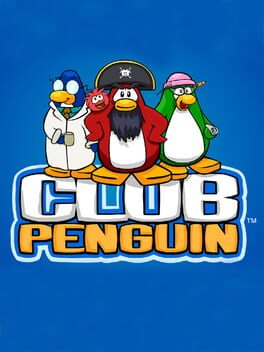
▲
2
▼
Chris Hendricks, a former artist and composer for Club Penguin, was originally against the inclusion of the game's main villain Herbert P. Bear, as he felt that Club Penguin was a game that was meant to be "safe and fun" and thus didn't need a villain. However, during development of the PSA missions, it became apparent that it was becoming difficult to put obstacles in the player's way without some sort of villain behind it. The team member who first pitched the idea of adding a villain to the game initially came up with the idea of there being three polar bears: a boss bear, a skinny vegetarian henchman bear, and a big stupid bear who would lift heavy objects and be endearing and lovable. Some staff, however, felt that this was too many bears, and eventually reached a compromise: take all the best attributes of the three bears, combine them into one bear, and give him a lovable sidekick.
Chris, however, was still concerned about the idea of adding a villain, so to both build up mystery and try to appease him, the story was developed so that the villain wouldn't be revealed until the fifth mission: in the third mission, the only evidence of the villain was white fur. This gave them a potential escape route in case players didn't want a villain in the game, as they could have the fourth mission reveal that the whole thing was a misunderstanding and that a white puffle (which hadn't debuted at that point) was to blame. As it would turn out, fans loved the idea of a villain, so the fourth mission would give a shadowy teaser of the villain, before the full reveal of Herbert P. Bear in the fifth mission. Chris would later admit that he was wrong to not want a villain in the game, as Herbert became one of his favorite characters, and led to the introduction of other memorable villains (i.e. Tusk and Ultimate Proto-Bot 10000) as well.
Chris, however, was still concerned about the idea of adding a villain, so to both build up mystery and try to appease him, the story was developed so that the villain wouldn't be revealed until the fifth mission: in the third mission, the only evidence of the villain was white fur. This gave them a potential escape route in case players didn't want a villain in the game, as they could have the fourth mission reveal that the whole thing was a misunderstanding and that a white puffle (which hadn't debuted at that point) was to blame. As it would turn out, fans loved the idea of a villain, so the fourth mission would give a shadowy teaser of the villain, before the full reveal of Herbert P. Bear in the fifth mission. Chris would later admit that he was wrong to not want a villain in the game, as Herbert became one of his favorite characters, and led to the introduction of other memorable villains (i.e. Tusk and Ultimate Proto-Bot 10000) as well.
Platform: Nintendo Entertainment System
▲
2
▼
Shortly after the Famicom's launch in 1983, Atari approached Nintendo offering to distribute the system outside of Japan as the Nintendo Enhanced Video System. Negotiations for the arrangement stalled when Atari saw a demonstration for the Coleco Adam home computer system that used the ColecoVision port of Donkey Kong as a demo title. Because Atari previously gained the exclusive PC port rights to the arcade game, they assumed that Nintendo was also working with Coleco behind their backs. By the time the misunderstanding was cleared up, the North American video game industry had crashed and Ray Kassar had stepped down as CEO of Atari, causing the agreement to be called off entirely. The Famicom wouldn't reach international shores until 1985, when Nintendo began distributing a revised version in North America themselves as the Nintendo Entertainment System.
Ars Technica article:
https://arstechnica.com/gaming/2021/12/time-to-feel-old-inside-the-nes-on-its-30th-birthday/
Classic Gaming article:
https://web.archive.org/web/20051124042223/http://www.classicgaming.com/features/articles/nes20th/
GameSpy article:
https://web.archive.org/web/20040701101711/http://archive.gamespy.com/articles/july03/famicom/index11.shtml
https://arstechnica.com/gaming/2021/12/time-to-feel-old-inside-the-nes-on-its-30th-birthday/
Classic Gaming article:
https://web.archive.org/web/20051124042223/http://www.classicgaming.com/features/articles/nes20th/
GameSpy article:
https://web.archive.org/web/20040701101711/http://archive.gamespy.com/articles/july03/famicom/index11.shtml
Platform: Sega Saturn
subdirectory_arrow_right PlayStation (Platform)
▲
2
▼
In 1992, after the failure of a deal to create a CD-ROM drive for the Super Nintendo Entertainment System, Sony approached Sega of America proposing that they collaborate on a next-generation CD-ROM console to compete with Nintendo. While Sega of America was open to the idea and even started testing the waters between the two companies by having each develop a handful of titles for the Sega CD, Sega of Japan shot down the concept. Consequently, Sony would reorient their efforts towards what would become the PlayStation, while Sega would develop their own next-gen console, the Sega Saturn, in-house. In an interview with Sega-16, Tom Kalinske cited the veto as a factor in his decision to step down as head of Sega of America.
Time Extension article:
https://www.timeextension.com/features/flashback-sega-and-sony-almost-joined-forces-to-battle-nintendo-in-the-90s
Time Extension interview with Kalinske:
https://www.timeextension.com/features/interview-former-sega-president-tom-kalinske-on-the-rise-and-fall-of-a-16-bit-empire
Sega-16 interview with Kalinske:
https://www.sega-16.com/2006/07/interview-tom-kalinske/
https://www.timeextension.com/features/flashback-sega-and-sony-almost-joined-forces-to-battle-nintendo-in-the-90s
Time Extension interview with Kalinske:
https://www.timeextension.com/features/interview-former-sega-president-tom-kalinske-on-the-rise-and-fall-of-a-16-bit-empire
Sega-16 interview with Kalinske:
https://www.sega-16.com/2006/07/interview-tom-kalinske/
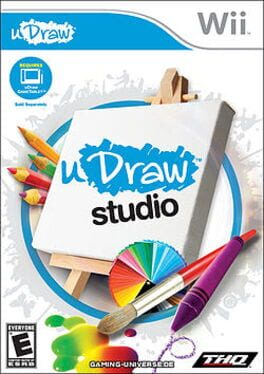
▲
2
▼
The bankruptcy of THQ is often pinned on the uDraw peripheral for the Wii - this is not completely true, as the Wii version of the uDraw was highly successful. However, the HD versions of the uDraw, released for PlayStation 3 and Xbox 360, were a killing blow to the company (even if not the sole cause of it's bankruptcy), as it was heavily overproduced compared to the size of the audience for casual games on those platforms and an even lower amount of uDraw-supported titles on those platforms relative to the Wii. Supposedly, the HD uDraw was greenlit by THQ's family division, PlayTHQ, without proper permission from the main branch of the company without even knowing what games could or would be made on the hardware.
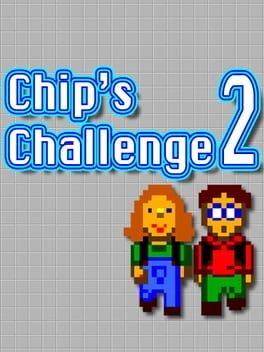
▲
2
▼
Chip's Challenge 2 was finished in 1990, two years after the completion of Chip's Challenge and a year after the latter game's release, but due to the IP being sold, it had to wait 25 years to see an official release in 2015, following five years of negotiation over the series' rights.
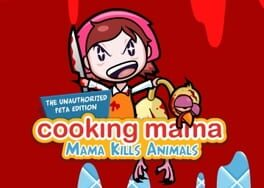
subdirectory_arrow_right Cooking Mama: World Kitchen (Game), Majesco (Company), Cooking Mama (Collection)
▲
2
▼
When PETA released Cooking Mama Kills Animals, a satirical flash game parodying the Cooking Mama franchise, Mama series publisher Majesco responded with a press release condemning the game and stating that Mama, while not a vegetarian, supports humane treatment of animals:
"Mama wants people to know that World Kitchen includes 51 recipes from around the world, ranging from vegetarian fare like miso soup and rice cakes to international delicacies like ginger pork and octopus dumplings. "I would never put rat in my Ratatouille," said a feisty Mama while beating some eggs. "Like any accomplished cook, I create my recipes to appeal to a broad range of tastes and preferences. My only goal is to ensure you leave the table well fed." Cooking Mama World Kitchen includes more than 25 vegetarian-friendly recipes including delicious breakfast, dinner, dessert and snack options. And, while Mama is not a vegetarian, she fully supports the humane treatment of animals, particularly for her canine protege Max who makes his doggie debut in World Kitchen."
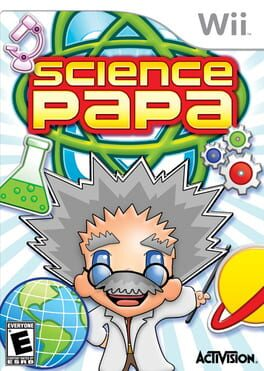
▲
2
▼
When Science Papa was announced by Activision, many journalists believed the game was trying to cash in on the success of Cooking Mama. When asked for a comment by Kotaku, Mama series publisher Majesco wrote an allegation writen in-character by Mama, stating Science Papa to be her ex-boyfriend:
"So you want some dirt on "Science Papa" to splash on your site? I'll shovel it. We dated briefly (when he had much better hair). And now he clearly wants a piece of the best-selling pie by associating himself with an incredibly successful, and I'll emphasize, happily married, woman. Frankly, he never appreciated my cooking and I grew weary of his tedious "experiments." You want real mind-bending science, go figure out how to make Toulouse Cassoulet for your next dinner party of 20 and let me know how it goes, Papa."
Platform: Nintendo GameCube
▲
2
▼
 Among the files uncovered in a massive 2020 breach of internal server data from Nintendo are documents surrounding Project BB2, a never-released, iQue-branded version of the GameCube for the Chinese market. According to an executive summary from January 30, 2004, this system would've played games off of CD-ROM and DVD-ROM discs rather than the GameCube's proprietary format; consequently, it also would've been compatible with audio CDs and DVD video like the Panasonic Q. Project BB2 was also intended to feature karaoke support, owed to karaoke's high popularity in China.
Among the files uncovered in a massive 2020 breach of internal server data from Nintendo are documents surrounding Project BB2, a never-released, iQue-branded version of the GameCube for the Chinese market. According to an executive summary from January 30, 2004, this system would've played games off of CD-ROM and DVD-ROM discs rather than the GameCube's proprietary format; consequently, it also would've been compatible with audio CDs and DVD video like the Panasonic Q. Project BB2 was also intended to feature karaoke support, owed to karaoke's high popularity in China.
Platform: Nintendo Switch
▲
2
▼
 Among the material uncovered in the 2020 Gigaleak, a large-scale data leak from Nintendo's internal servers, was a series of documents surrounding Project INDY, an early iteration of the Nintendo Switch co-developed with ST Microelectronics. Project INDY was envisioned as a successor to the Nintendo 3DS and was halfway between it and the Wii U in terms of processing power.
Among the material uncovered in the 2020 Gigaleak, a large-scale data leak from Nintendo's internal servers, was a series of documents surrounding Project INDY, an early iteration of the Nintendo Switch co-developed with ST Microelectronics. Project INDY was envisioned as a successor to the Nintendo 3DS and was halfway between it and the Wii U in terms of processing power.The system would've carried over many of the 3DS' features, including dual-screen functionality, touch controls, stereoscopic 3D, motion sensors, augmented reality functionality, and StreetPass support. The system also would've featured backwards compatibility with 3DS game cards, Bluetooth connectivity (including support for wireless speakers and headsets), GPS functionality, a videotelephony app, the ability to wirelessly project games to a TV screen via Miracast, and support to quickly convert a commercially released unit into a developer system, easing development costs for independent studios. Many of these features would be carried over to the Switch in modified forms.
Technical documents for Project INDY show that while prototype software was developed for the system, Nintendo were unsure about its specifications and came up with various alternative options, such as support for 120 fps video, an 800p display, and a design with a single, oblong touchscreen that spans the full face of the device save for two joysticks near each end. The latter design was the final iteration that Nintendo came up with before ceasing work with ST Microelectronics in late 2014. By this point, Nintendo had devised the Switch's final name, listing it on the design's blueprints.
An earlier iteration of this oblong design would also become the basis for a hoax image created in the interim between Nintendo president Satoru Iwata's announcement of the Switch's development in March 2015 and the company's first public reveal of the device in October 2016. The image is a 3D-printed mockup of the Switch based on a patent filed earlier in 2014, which itself reveals that Nintendo was still considering stereoscopic 3D, backwards compatibility with 3DS games, and videotelephony support.
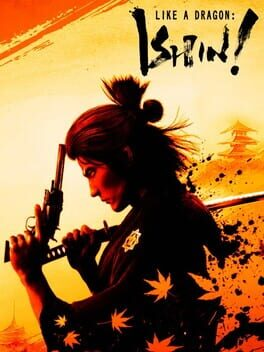
▲
2
▼
When actor Rahul Kohli's likeness was used as a trooper card in the 2023 remake of Like a Dragon: Ishin!, he expressed a feeling that there were notable differences in corresponding with Western and Eastern game studios. In an interview with Digital Trends, he was quoted as saying:
"I definitely saw a difference between working with Western and Eastern studios. Our correspondence with Sega and RGG was so involved and sweet. They really cared, and it felt so much more collaborative. Nothing specific, but when I've been involved in other things, it's like, 'Just do the voice, mate," and then you never hear about it again. I never expected to have the back and forth of RGG constantly checking in to ask, "Is Rahul happy with this? Does he like the artwork?" I never said no to any of it, but I'm sure if I had any type of gripe, they would have obliged, so I felt very welcome and involved."
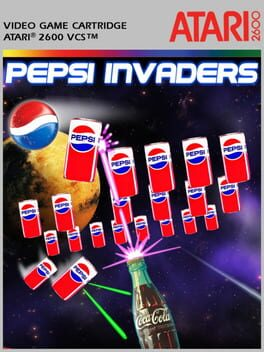
▲
2
▼
Pepsi Invaders was made for Coca-Cola's 1983 sales convention with the purpose of boosting the morale of employees - despite this, most copies that were given away were thrown out.
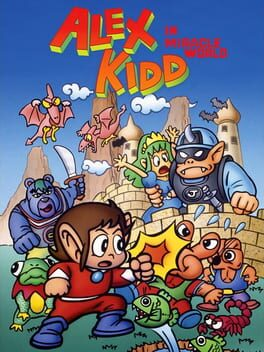
subdirectory_arrow_right Dragon Ball (Franchise)
▲
2
▼
Similarly to Donkey Kong's origins as a Popeye game, Alex Kidd in Miracle World was originally intended as a Dragon Ball game. Alex's creator, Kotaro Hayashida, said in an interview:
A classic Dragon Ball influence can be observed in the final game, such as Alex's laser bracelet resembling a kamehameha and the use of Janken (Rock, Paper, Scissors) in boss battles, as well as certain character and object designs with resemblance to those from Dragon Ball, and shared influences from the public domain Japanese story Journey to the West.
"Sega were planning on making a Dragon Ball game... I guess this happened long enough ago that it's okay for me to talk about this! The project began as a Dragon Ball title, not as a direct competitor to Super Mario Bros.
But when we were told we could not use the Dragon Ball licence any more, we were forced to come up with our own ideas instead. For example, when it was Dragon Ball, Goku fought with his Power Pole, but we changed that to a punch attack. It was only after we came up with the plan to restart the project as Alex Kidd in Miracle World that we starting thinking about Mario, and looking for ways in which to differentiate the title from it."
But when we were told we could not use the Dragon Ball licence any more, we were forced to come up with our own ideas instead. For example, when it was Dragon Ball, Goku fought with his Power Pole, but we changed that to a punch attack. It was only after we came up with the plan to restart the project as Alex Kidd in Miracle World that we starting thinking about Mario, and looking for ways in which to differentiate the title from it."
A classic Dragon Ball influence can be observed in the final game, such as Alex's laser bracelet resembling a kamehameha and the use of Janken (Rock, Paper, Scissors) in boss battles, as well as certain character and object designs with resemblance to those from Dragon Ball, and shared influences from the public domain Japanese story Journey to the West.
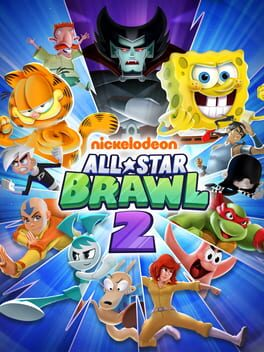
▲
2
▼
 In the weeks prior to Nickelodeon All-Star Brawl 2's release, a near-complete prototype build of the game leaked online. The Twitter account for the game's main developer, Fair Play Labs, accidentally retweeted a GIF of SpongeBob dancing from an unrevealed sound test mode and promptly deleted it. Community manager Thaddeus Crews expressed that, while he didn't have a particular moral problem with fans playing the leaked build, he advised against competitive players using it for practice due to how outdated it is.
In the weeks prior to Nickelodeon All-Star Brawl 2's release, a near-complete prototype build of the game leaked online. The Twitter account for the game's main developer, Fair Play Labs, accidentally retweeted a GIF of SpongeBob dancing from an unrevealed sound test mode and promptly deleted it. Community manager Thaddeus Crews expressed that, while he didn't have a particular moral problem with fans playing the leaked build, he advised against competitive players using it for practice due to how outdated it is.
Fair Play Tweet screenshot:
https://www.resetera.com/threads/nick-brawl-2-nasb-2-updates-thread.751759/page-12
Repiteo tweet:
https://twitter.com/Repiteo/status/1715910478097007037
https://www.resetera.com/threads/nick-brawl-2-nasb-2-updates-thread.751759/page-12
Repiteo tweet:
https://twitter.com/Repiteo/status/1715910478097007037

subdirectory_arrow_right Dinosaur Planet (Game)
▲
2
▼
 Dragon Rock, Star Fox Adventures' final SpellStone area, was considerably larger and more complex in earlier versions of the game than in the final release. Both the leaked December 2000 build of Dinosaur Planet and also the E3 2002 kiosk version of Star Fox Adventures show that Dragon Rock featured a slew of additional areas that didn't make the final cut, such as an underground quarry area where Sabre/Fox would have to save the imprisoned EarthWalker from being eaten by a group of creatures known as Skeetlas, and also a large underground mining facility Sabre/Fox could only access by flying the imprisoned CloudRunner to the top of the titular Dragon Rock (a giant tower in SFA) at the center of the map. In SFA's case, Fox would have to solve a puzzle that would involve powering the portal at the back end of the room that would grant him access to Drakor, Dragon Rock's boss.
Dragon Rock, Star Fox Adventures' final SpellStone area, was considerably larger and more complex in earlier versions of the game than in the final release. Both the leaked December 2000 build of Dinosaur Planet and also the E3 2002 kiosk version of Star Fox Adventures show that Dragon Rock featured a slew of additional areas that didn't make the final cut, such as an underground quarry area where Sabre/Fox would have to save the imprisoned EarthWalker from being eaten by a group of creatures known as Skeetlas, and also a large underground mining facility Sabre/Fox could only access by flying the imprisoned CloudRunner to the top of the titular Dragon Rock (a giant tower in SFA) at the center of the map. In SFA's case, Fox would have to solve a puzzle that would involve powering the portal at the back end of the room that would grant him access to Drakor, Dragon Rock's boss. In the final release, both the underground quarry and the mining facility were removed: Fox simply frees the EarthWalker from a corral on the surface by hitting a switch located nearby the imprisoned HighTop from across the map, and Fox immediately skips to fighting Drakor after being dropped off by the CloudRunner at the top of the center tower. Funny enough, when Fox lands on the platform in Drakor's arena, it bizarrely shows electricity spewing around him, which was a remnant of the portal he was supposed to activate in the cut mining facility segment in order to access the boss.
The SFA dev team admitted on a 2003 Rare Scribes that Dragon Rock was massively scaled back from its intended design due to "approaching deadlines", presumably referring to the impending Microsoft buyout in 2002. It's worth pointing out that the mining facility area can actually be found in the files of the final retail release of SFA and surprisingly in a much more complete state than the kiosk's version, which indicates that the dev team continued working on this area in the final months of development but ran out of time to polish it to their liking.
Dragon Rock in Dinosaur Planet:
https://youtu.be/I-pJrjq6QSM?t=18
Dragon Rock in Star Fox Adventures, circa E3 2002:
https://youtu.be/4yMRuFkG8vc?t=1750
Dragon Rock's cut bottom mining area found in the retail version of Adventures:
https://www.youtube.com/watch?v=xHQYmpHWYEE
Rare scribes circa 2003 explaining why Dragon Rock was cut down:
https://www.raregamer.co.uk/scribes-april-3rd-2003/
https://youtu.be/I-pJrjq6QSM?t=18
Dragon Rock in Star Fox Adventures, circa E3 2002:
https://youtu.be/4yMRuFkG8vc?t=1750
Dragon Rock's cut bottom mining area found in the retail version of Adventures:
https://www.youtube.com/watch?v=xHQYmpHWYEE
Rare scribes circa 2003 explaining why Dragon Rock was cut down:
https://www.raregamer.co.uk/scribes-april-3rd-2003/
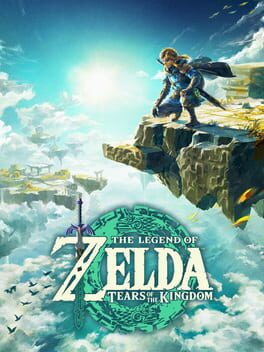
▲
2
▼
When The Legend of Zelda: Tears of the Kingdom launched, a player who acquired the game early posted an image of them playing it and tagged multiple accounts associated with Nintendo to provoke them. This would be responded to by former Nintendo of America president Reggie Fils-Aime with a quote from the movie Taken. While the gaming press and many fans thought this was humorous, it also received major backlash (particularly from people who had already grown to dislike Reggie due to his comments on the blockchain and the police force, and allegations of Nintendo's corporate culture during his tenure) due to Reggie directly quote-retweeting the post for all of his audience to see, screenshotting the post without censoring their username when the user took precautions to protect themselves from the audience attracted by Reggie's post, and using a quote that - in its original context - was a death threat, which only intensified when it was discovered that the user in question was 16 years old at the time.
Company: iQue
▲
2
▼
Originally, iQue was founded as a joint venture between Nintendo and Taiwanese-American technologist Wei Yen as a Chinese video game console manufacturing company. However, by 2013 the company became a wholly-owned subsidiary of Nintendo, and in 2019 they began hiring for developers, programmers and testers, indicating that they were transitioning into a development company to support games made by Nintendo EPD.
iQue being wholly-owned by Nintendo:
http://nintendoeverything.com/up-to-date-listing-of-nintendo-subsidiaries/
https://www.nintendo.co.jp/ir/pdf/2013/security_q1303.pdf#page=5
iQue transitioning into a development company:
https://web.archive.org/web/20180304204801/http://www.ique.com/hr/jobs.html
http://nintendoeverything.com/up-to-date-listing-of-nintendo-subsidiaries/
https://www.nintendo.co.jp/ir/pdf/2013/security_q1303.pdf#page=5
iQue transitioning into a development company:
https://web.archive.org/web/20180304204801/http://www.ique.com/hr/jobs.html

▲
2
▼
Despite many of the more unusual character picks in the first Nickelodeon All-Star Brawl being noted as characters the development team had to push Nickelodeon into allowing them to use, Grandma Gertie in Nickelodeon All-Star Brawl 2 was actually pitched by Nickelodeon corporate, something community manager Thaddeus Crews has stated to be akin to "selling blood to a vampire".